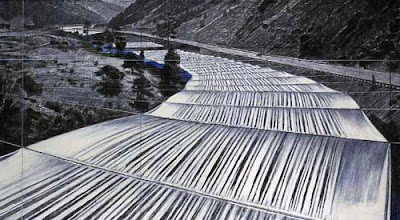Dai primi disegni rupestri fatte in Lascaux circa 20.000 anni fa, l’arte ha modificato la Terra. In onore della Giornata della Terra 2013, Artinfo prende in esame quattro esempi che dovrebbero farci riflettere attentamente su come le attività degli artisti possono avere un impatto sul pianeta.
Io vi parlo di due di essi.
From the first cave drawings made in Lascaux approximately 20,000 years ago, art has altered the Earth. In honor of Earth Day 2013, Artinfo takes a look at four examples that should make us think carefully about how activities of the artists can impact the planet.
I present for you two of these.
World Trade Center, “Tribute in Light”
A New York gli 88 proiettori che illuminano il cielo ogni anno l’11 settembre sono stati progettati in collaborazione tra Creative Time e il Municipal Arts Society come un memoriale per le vittime del 9/11. Il suo valore come tributo, tuttavia, deve essere rivalutato rispetto ai 9.000 uccelli che sono rimasti intrappolati all’interno della torre di luce in una sola notte.
In New York the 88 searchlights that shot into the sky each year on September 11 were designed in collaboration between Creative Time and the Municipal Arts Society as a memorial to victims of 9/11. They remain one of the most moving — and visible — tributes to the events. It’s value as a tribute, however, has to be weighed against the up to 9,000 birds that have become trapped inside the tower of light in a single night.
Christo and Jeanne-Claude, “Over the River”
Questo lavoro – che ricopre con drappeggi di tessutoil fiume Arkansas – non è nemmeno stato ancora completato, e in effetti non potrà mai essere realizzato. Il progetto ha trovato una forte resistenza da parte di un gruppo di manifestanti che si ribattezza Rags Over the Arkansas River ( ROAR ). Tra le tante obiezioni vi è quella del possibile danno ambientale che la spettacolare opera d’arte creerebbe- in particolare, potrebbe distruggere l’habitat di molti animali.
This work — which would involve draping fabric panels across the Arkansas River — hasn’t even been completed yet, and indeed may never be. In planning for years, the project has attracted fierce resistance from a group of protestors that dubs itself Rags Over the Arkansas River (ROAR). Among the many objections is the possible environmental damage of the spectacular work of environmental art — specifically, that it might destroy habitat of many animals.



.jpg)



